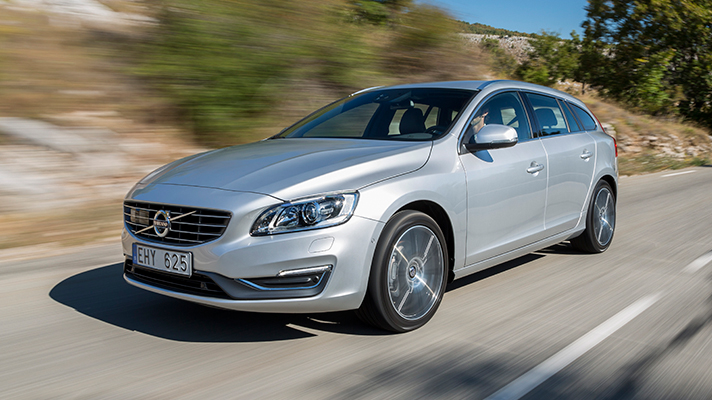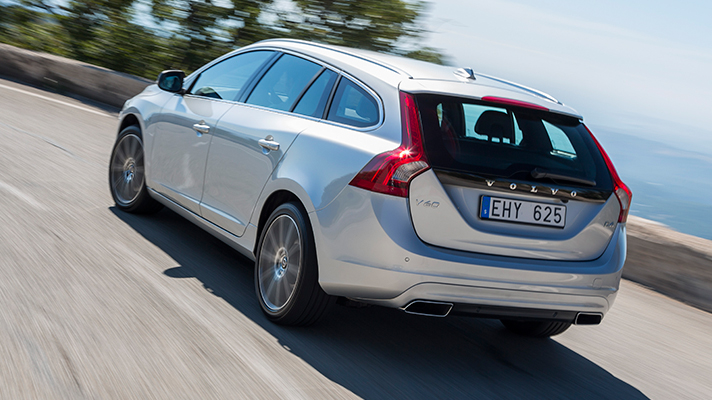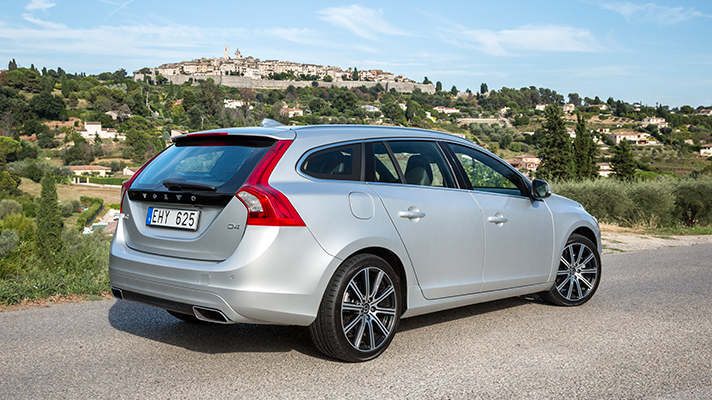
SPEC HIGHLIGHTS
- BHP
181bhp
- 0-62
7.6s
- CO2
99g/km
- Max Speed
140Mph
- Insurance
group27E
It's the era of the giants. These are not easy times for plucky little car-makers who go it alone. Or even plucky medium-sized ones. Look what happened to Saab. But Volvo has a survival plan. It aims to save a vast swathe of engineering and manufacturing cost. In the future it will get by on just one engine.
Well, one engine in many forms. It's an aluminium-block four-cylinder two-litre. But by using different cylinder heads, pistons and exhausts, it can be a diesel or a petrol. And with many degrees of turbocharging - including a pair of turbos for the top diesel one, and for the top petrol unit the trouser-tremblingly exciting description 'Superturbo'. Plus electric boost via hybrids ad electric rear axle drive. Outputs will vary from 120bhp to over 300bhp.
Because all versions were planned together, each one has the same mounting locations, the same inlet and exhaust positions, the same attachments to the transmissions (just one manual and one auto).
This could make huge savings. At the moment Volvo has a bewildering array of eight entirely different engine families. Count them: a V8 in the US-market XC90, a transverse turbo six it got from Land Rover years ago, its own five-cylinder jobbies in diesel and petrol, two different families of Ford-PSA diesels, a Ford 2.0 petrol and the old Fiesta 1.6 Sigma petrol. They all need entirely different under-bonnet layouts and crash testing. It's a crazily complicated legacy, and complication means cost.
Well that's what's in it for Volvo. What do the buyers get? By sticking to four cylinders, even on big cars, there's less weight, to the benefit of economy and handling. More space under the bonnet means room for sophisticated front suspensions, and the design can be sleeker. Most of all, fours are inherently more economical than fives, sixes or eights.
But do they actually work well in practice? The first car to be designed around the new engine is the new XC90, and we won't see that for another year. First cars to get the engine as a retro-fit are the V60, S60 and XC60.
So we had a go in the V60 with the twin-turbo 180bhp diesel. With a new eight-speed auto, this one will do just 111g/km - the manual S60 saloon with the same engine gets to below 100g/km. That's an absolutely class-leading combination of power and economy.
Most high-output diesels are noisy, and most lightweight aluminium-block diesels are noisy. But thanks largely to clever new injector design, this one is reasonably civilised. Not the very best, but I'd say better than the BMW equivalent.
And the boost comes in progressively, with little lag and a delivery that keeps on giving well round the rpm dial. The autobox shifts smoothly and anticipates your needs well. But automatic diesels do tend to feel sluggish, and this one was no different. The on-paper performance is good at 7.6 seconds 0-62, but on the road the auto could do with a bit more sparkle.
So could the chassis of the car I drove. There are four versions to choose from: three levels of passive stiffness, and one with adaptive dampers. I was in the middle passive one. Its steering is accurate but lifeless. But the ride is reasonable - if a little shuddery over high-frequency corrugations - and this would be the one to choose for high-mileage driving.
Top Gear
Newsletter
Thank you for subscribing to our newsletter. Look out for your regular round-up of news, reviews and offers in your inbox.
Get all the latest news, reviews and exclusives, direct to your inbox.
By the way, the badge says D4. The old D4 was a five-cylinder not a four, took two seconds longer to get to 62 and did 129g/km and 57.6mpg instead of 111 and 67.3. That's progress.
Featured

Trending this week
- Car Review
BMW 1 Series
- Top Gear's Top 9
Nine dreadful bits of 'homeware' made by carmakers






